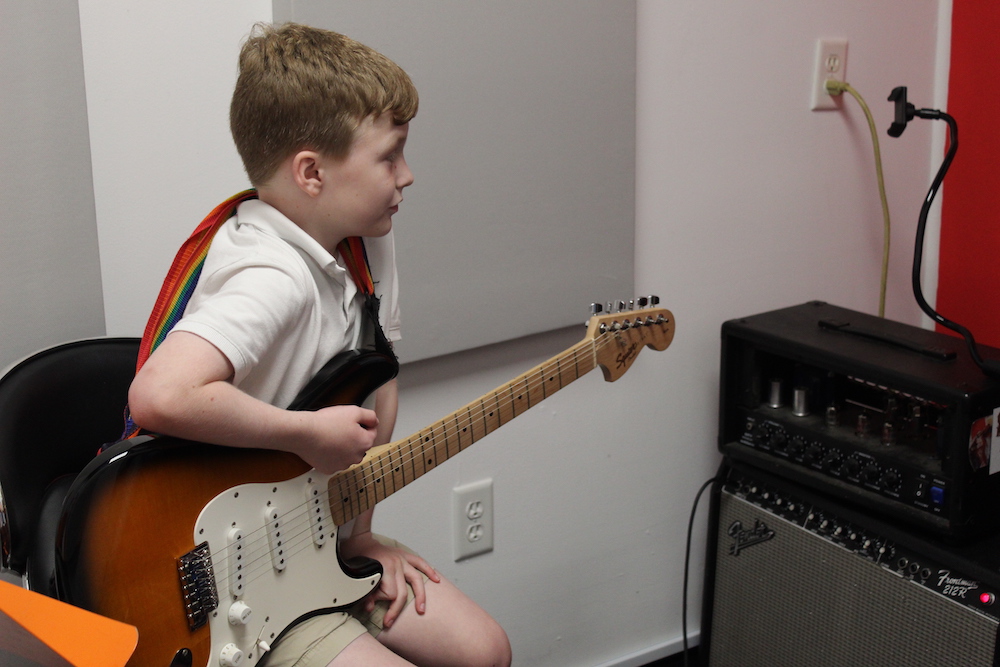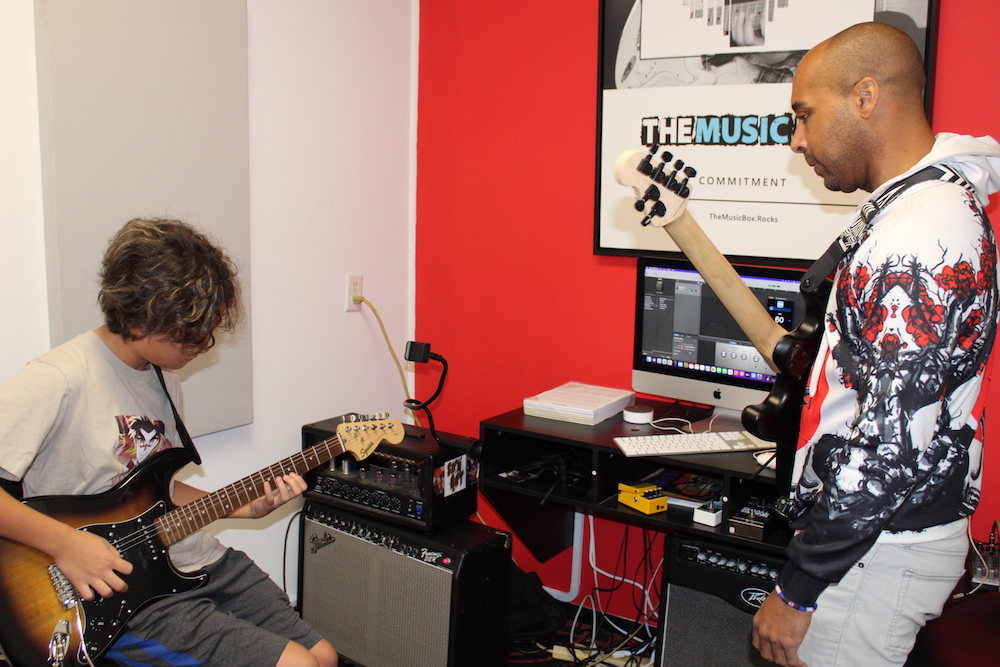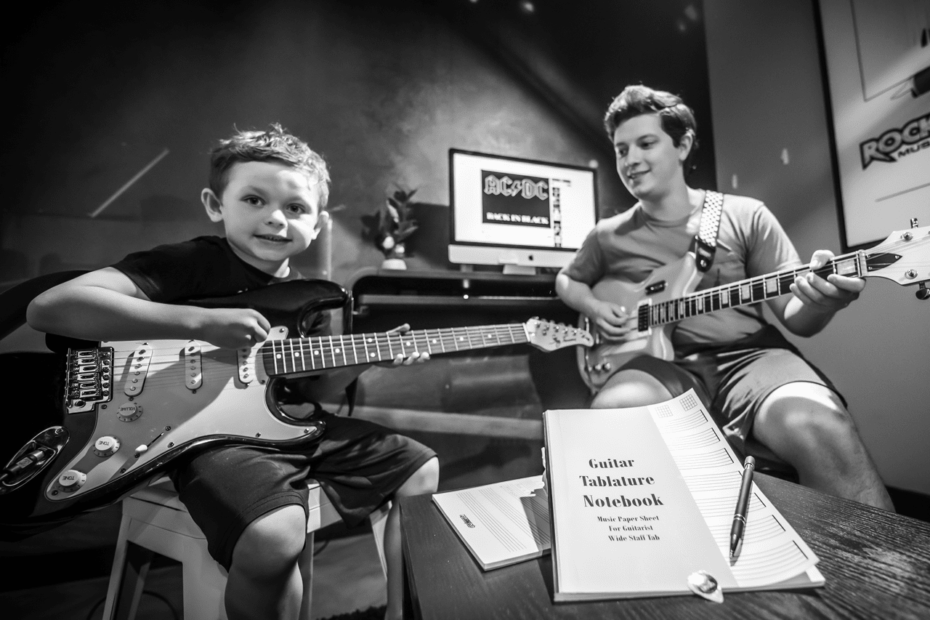Many beginner guitar players think of a solo guitar as an instrument that shines the most during the actual solos. Experienced players understand the nuances of licks, harmonies, and minute details that make songs fuller and more expressive, but no one learned these tricks overnight.
We are The Music Box, Tampa’s premier guitar school, and our coaches are here to help students of guitar learn not only how to become better players but also build habits that can help them master the art of solo guitar playing.
In this article, we’ll take you through some of the most important techniques solo guitarists use to enrich the song they are playing and the band’s overall tone. If you’d like to learn more about our coaching methods, feel free to visit our Instagram page. Meanwhile, let’s discuss the techniques all solo guitar players should know.
Controlling the Notes
One of the first techniques most guitar players learn is “palm muting”. However, this technique alone isn’t enough to fully control how the notes resonate and ultimately sound.
At a basic level, palm-muting is performed by placing the palm of the picking hand over the strings. Notes can also be muted with the fretting hand, or with a combination of palm-muting executed with both hands.
The general idea behind this technique is to either bring the notes to a stop (to prevent ringing), to produce “chunky” riffs, or to add a bit more color to the notes. The angle and force applied to palm-muting techniques largely define the outcome. Check us out on Facebook if you want to see theory being put into practice.
Bends and Note Accentuation
The second “suite” of techniques revolves around accentuating certain notes. These are the notes that you want to sound a bit differently, especially the ones that either start or finish the lick or a sequence of riffs you’ve been playing.
While rhythm guitarists are sometimes “allowed” to play riffs monotonously, solo guitarists are not. Players need to bend the notes, apply pinch harmonics, and ideally, apply different pedal effects so that their “notes” can stand out rather than just their tone.
Many beginners instinctively use these techniques when they’re playing solo parts, but they are equally efficient for licks and riffs.

Connecting Notes with Slides
In certain styles of music, especially heavier and faster ones, playing economy plays a big role in how fluently the guitarists do their job. Many rock and metal players use slides as frequently as possible to ensure their playing is smooth and transitions between various chord progressions effortless.
Most beginner guitarists don’t realize that multiple versions of the “slide” technique exist. For example, the basic slide is performed by pulling the finger from one fret to the next, covering every fret in between during the process.
A “legato” slide skips the frets in between the desired notes, instantly switching to the desired pitch. A “shift” slide is a combination of the two, with the main difference being that the notes are both “dragged” from one pitch to the next and played once the final fret is reached.
Deploying a combination of these variations of the slide technique can be instrumental to solo guitar players who want to fully express their playing style. At The Music Box, our guitar coaches work diligently to properly educate our students on how and when to perform these techniques without overplaying. Check out our TikTok for more info.
Tapping
Once again, whenever guitar “tapping” techniques are mentioned, most musicians think of Eddie Van Halen’s solos. However, many bands like Kalmah, Insomnium, and various other rock groups routinely deploy these techniques throughout their riffs and licks.
The aforementioned playing economy is the main reason why guitarists should use tapping techniques when they’re either uncertain about their fretting accuracy or simply don’t have enough time to reach frets that are too far apart.
When it comes to solo guitar licks, tapping can efficiently replace shredding on the higher pitches, mainly because higher frets are too narrow to allow beginners to play many notes with the required precision. Whether you’re looking to grasp tapping techniques for your solo parts or simply learn how to improve this skill, you’re welcome to join us at The Music Box.
Hybrid Picking
Until relatively recently, guitarists who simultaneously played with their fingers and a pick were relatively rare. Then came Animals As Leaders’ Tosin Abasi, and the norm changed.
More and more guitarists, especially the ones who specialize in blues, djent, and progressive styles of music want to explore the possibilities of this “hybrid picking” style.
There’s more to hybrid picking than just optimizing the playing economy. Namely, fingers don’t produce the same tones as picks made of plastic do. Notes sound smoother and gentler when plucked with fingers, not to mention that this playing style unlocks a variety of techniques that are very difficult to execute with a guitar pick.
Think about “slapping” and “popping” techniques as something that guitarists can borrow from bassists. By mastering the hybrid picking style, you’ll get to learn and use many techniques that you probably never thought about before.

Shredding
The term “Shredding” refers to playing dozens of notes in a remarkably quick succession. It is predominantly used in solo parts, but no one is stopping you from building licks with shredding parts.
There are many bands that rarely include “conventional” solo parts in their songs, especially death metal bands; they “shred” their way through tunes and efficiently use this technique in their normal riffs.
Solo guitarists who want to build colorful, innovative solo parts might want to start working on their shredding game as early as possible. Our guitar coaches are there to assist you while you’re building up your speed and playing accuracy.
Ready to Start Your Journey as a Solo Guitarist? Join The Music Box!
There are hundreds of variations of solo guitar techniques waiting for you to discover them. If you want to benefit from being coached by professionals with decades of combined experience, we warmly invite you to become a guitar student at The Music Box. We’re headquartered at 4321 Gunn Highway in Carrollwood, Florida, but if you prefer, you can also enroll online by following this link.



